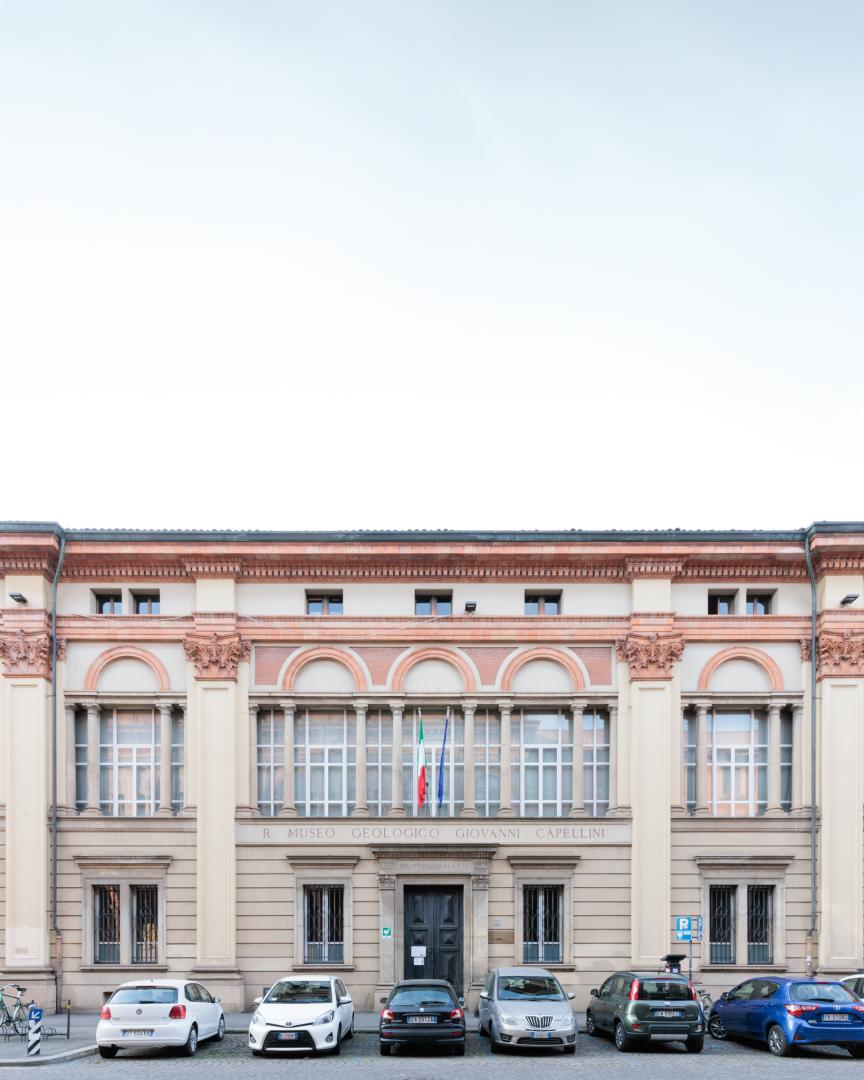At the beginning of the 1980s, the building presented alarming lesions on its structure and underwent in-depth restoration on the occasion of the celebrations for the 9th Centenary of the University of Bologna, as shown by the commemorative bronze sigillum magnum placed on the façade. The reinforcement work restored to the interiors an arrangement more faithful to the original floor plan configuration, especially on the ground floor, and also brought to light the previously concealed cross-vaulting.
Today, the museum houses one of the most important geology and palaeontology collections in Italy.
Sources
Università di Bologna. Palazzi e luoghi del sapere, a cura di Andrea Bacchi e Marta Forlai, Bologna, BUP, 2019.
Lo sviluppo urbano ed edilizio dell’Ateneo bolognese, 1986-1995, a cura dell’Associazione ingegneri e architetti della Provincia di Bologna, Bologna, Inarcos, 1995, pp. 64 e ss.
La casa dell’Università, Lo sviluppo edilizio dell’Ateneo di Bologna dal 1986 al 2000, Bologna, CLUEB, 2000, pp. 114-115.
Gian Battista Vai, Museo Geologico Capellini. Guida breve per immagini, Bologna, SMA, 2009.
Photo: 1Cinquantesimo

